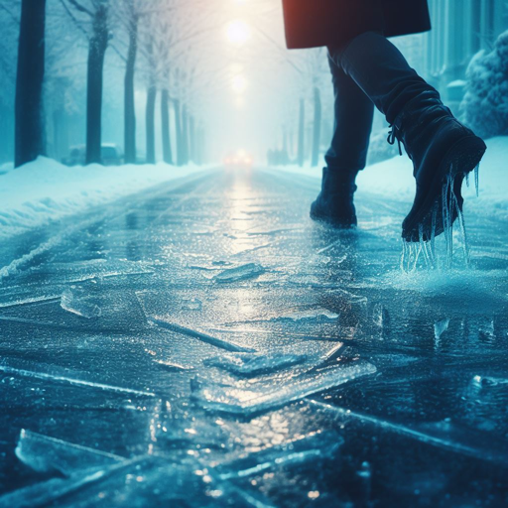Beneath the picturesque layer of snow that blankets much of the world during winter lies an often-dangerous reality: A significant risk of slips and falls. This is particularly true for those over 65 according to a 2018 CDC study that showed falls to be the leading cause of death among this group. But it is not just older folks who are affected. A separate 2014 study found falls were the leading cause of injury for traumatic brain injury emergency department visits, hospitalizations and deaths.
Surprising, right?
Icy sidewalks and snowy pathways can turn a simple stroll into a hazardous adventure. However, with a bit of awareness and precaution, you can navigate the winter wonderland safely. Here is a guide on how to prevent falls this winter season. Although seemingly simple, you may not have thought about them:
1. Choose Proper Footwear and take small steps.
The foundation of fall prevention starts with your choice of footwear. Look for winter boots with non-slip soles to provide better traction on slippery surfaces. Ensure they are insulated and waterproof to keep your feet warm and dry, which increases sensitivity and thus, sure footedness. When walking on icy or snowy surfaces, take shorter steps to maintain better balance. This allows you to react quickly to unexpected changes in the terrain and reduces the risk of slipping.
2. Salt and Sand.
Keep your walkways clear by using salt or sand. These materials can help melt ice and provide additional traction. Spread them generously on sidewalks, driveways, and any other areas you frequent. Keep them at hand by placing a bucket by all the commonly used entry points into your home.
3. Be Mindful of Your Surroundings and Use handrails:
Stay vigilant and aware of your surroundings. Watch out for black ice, a nearly invisible hazard that often forms on roadways and sidewalks. Take extra caution when transitioning between surfaces, such as from snow to pavement. When available, use handrails for support. Whether climbing stairs or navigating a slope, a sturdy handrail can be a crucial ally in maintaining balance and preventing falls.
4. Keep Walkways Well-Lit:
Ensure that pathways around your home are well-lit, especially during the early morning or evening when daylight is limited. Proper lighting helps you see potential hazards and navigate safely. When out in public places like markets or malls, use well-lit paths, even if that means taking a longer route.
5. Stay Active and Maintain Strength:
The least damaging fall is the one that never happens. Regular exercise helps maintain strength and flexibility, reducing the risk of falls. Focus on activities that improve balance and coordination, such as yoga or tai chi, to enhance your overall stability. Balance exercises in particular are so important, especially as we age.
By incorporating these simple yet effective measures into your winter routine, you can significantly reduce the risk of falls and enjoy the season with confidence. Remember, a mindful approach and proactive precautions are your best allies in staying upright and injury-free during the winter months.
